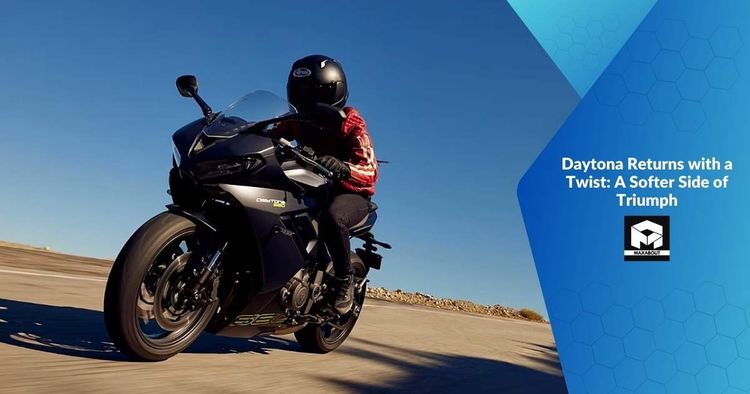The name ‘Daytona’ is hugely revered among motorcyclists and motor-noters alike. Triumph has started the new year by reviving the famed name, after a series of teasers released late last year. The Daytona 660 is obviously not as committed as its predecessor, and is in fact, built on the same platform as the Trident 660, and the Tiger Sport 660, but with certain changes to suit its middleweight sport-tourer nature. In the world of motorcycling, few names evoke as much admiration and excitement as Triumph's Daytona. However, in a surprising twist, Triumph has brought back the Daytona, but this time, it's not the hardcore beast we've come to expect. With its seat height of 810 mm, the Daytona 660 will seat you higher than the Trident 660. However, Triumph is offering a lower seat as an accessory, which will lower the seat height to 785 mm, making it even more accessible for shorter riders. The instrument cluster is recognizable from the one on the Tiger Sport 660, and in terms of equipment, you get three riding modes on offer; sport, road, and rain. The six-speed gearbox is offered with an optional quickshifter, and the clutch gets a torque assist function for a lighter clutch lever action.
Key Features
- The Legacy of Daytona: The original Triumph Daytona made its mark in the motorcycle world as a formidable force on the race track.
- The New Direction: Triumph's decision to revive the Daytona comes with a noticeable departure from its racing-focused roots.
- Design Evolution: The first thing enthusiasts will notice is the design evolution of the new Daytona.
- Performance with Poise: Despite its softer approach, Triumph hasn't compromised on performance. The handling characteristics, a hallmark of the Daytona lineage, have been fine-tuned to provide stability on the track and nimbleness on the road.
- Comfort and Ergonomics: One of the key elements of the Daytona's softer side is the attention to rider comfort.
- Market Dynamics and Target Audience: Triumph's decision to soften the Daytona aligns with broader market dynamics.
- Competitive Landscape: In the fiercely competitive world of sport motorcycles, Triumph's move to soften the Daytona adds an interesting dynamic.
- Rider Feedback and Anticipation: As news of the softer Daytona spread, rider forums and social media platforms buzzed with anticipation.
- The Daytona Community's Response: The Daytona has a dedicated community of riders who have revered its uncompromising performance over the years.
The 660 cc three-cylinder liquid-cooled powertrain churns out more power than on the other two motorcycles on this platform, packing 93.8 bhp at 11,250 rpm and 7 kgm of torque at 8250 rpm. Triumph claims that over 80 per cent of this torque is available from as low as 3125 rpm. The tubular steel perimeter frame is suspended on Showa 41 mm SFF-BP forks and a preload-adjustable monoshock. Riding on 17-inch Michelin Power 6 tyres, the Daytona 660 gets five-spoke cast aluminium alloy wheels. It also packs 310 mm floating twin discs at the front and a 220 mm fixed disc at the rear. However, unlike the Trident and the Tiger Sport 660, the Daytona does not get Nissin callipers on either end.
Given that Triumph has been offering many of its new models here, it is likely that we will be seeing the Daytona 660 on Indian roads sometime soon. We can expect an official announcement from the British bike maker in the coming months. Stay tuned for our upcoming anniversary issue and follow our social media handles.

